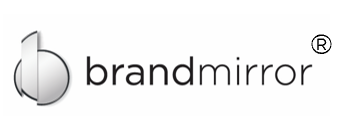A great business brand is all about creating an effective emotional connection with key constituencies, including customers, prospects, employees, and partners. Brand connection increases confidence in the business, which accelerates your audience’s choice. A brand is never static — it constantly balances between consistent messaging and adaptation to new circumstances, technologies and opportunities. As we enter 2022, here are five brand trends that businesses should consider to stay at the top of their game.
1. Alignment of purpose, mission, values, and vision
Lately, a critical challenge for businesses has been employee recruitment and retention. We’ve all heard about the great resignation. According to the US Bureau of Labor and Statistics, by the end of October 2021, there were 11 million job openings in the U.S., due in part to the Great Resignation. A great brand establishes more than a value proposition; it encompasses values in another sense of the word — the principles or standards by which a company abides. Study after study has shown the major factors at play when employees leave their jobs are a lack of connection to a meaningful purpose, a belief that they are not valued (in yet another sense of the word), and the feeling that they aren’t doing meaningful work. Other research shows that people tend to prefer to buy from companies with whom they feel aligned. The companies that take the time to revisit their purpose and communicate it in a compelling way to employees, clients, and prospects will be at a competitive advantage over the companies that fail to make this effort.
Insight: Alignment of the purpose, mission, values, and vision starts at the top with the personal brand of the CEO
2. Back to basics in business and brand strategy
Facebook has recently attempted a rebrand by renaming itself, but an unlikeable company (and Facebook is not well-liked) isn’t going to solve its challenge with a new name. As I wrote about in my last blog, a business should look carefully at the key drivers in their brand and business strategy — awareness, likeability, and market share. With clarity about its relative strength in each of these areas, companies can focus on utilizing the optimal brand and business strategy that leverages their unique strengths and shores up weaknesses.
Insight: Ask your clients about how you are meeting or exceeding their expectations (and be open to feedback on where you can improve).
3. Revisit brand promises
Brand promises are more than the goods or services offered; they are a series of promises and expectations set at every touchpoint, in every facet of the company. These can be internal and external since the experience of the employees will resonate outwards in terms of brand perception for purposes of recruiting, retention, and brand representation. The brand promises are more than words, it’s important to explore whether the brand promises are manifested into action. A company’s values in action at every level define the company culture, and it needs to be built, maintained, and celebrated intentionally. For a brand to succeed, leadership must have a strategy that infuses the culture into every experience to build a consistent brand reputation. Delivering on your brand’s promises creates loyalty with customers, draws in prospects, and establishes an effective barrier to keep talented employees from leaving.
Insight: Different audiences value touchpoints in diverse ways, be inclusive, and identify the touchpoints for various audiences.
4. Create compelling and consistent touchpoints
The days of only bricks-and-mortar business are over. In the new year, an effective exercise in brand management will include a review of all the places where the business interacts with clients and prospects. With each touchpoint, assess the “wow” factor — is the touchpoint useful as well as being effectively utilized? In addition, look for clarity and integration of words so that people know exactly what the company messages are throughout the touchpoints. If a dated website or inconsistent marketing collateral is perpetuating the wrong message, now is a good time to flag the problem and work on a remedy.
Insight: Download our customer journey & touchpoint map to get started.
5. Implement intentional branding at all levels.
As a leader of or in a company, it is not enough to mind the brand on your own. Intentional branding has to be worked at all levels. Begin with the leadership team, who sets and promotes examples to your team. Remember that every employee is a brand ambassador, and the employee experience drives the customer experience. Branding is established through consistent messaging, experience, and value. The work of the marketing or sales department is not independent of customer relations or even internally facing teams. They must each be consistent about the brand. That consistency should ideally emanate to include partners so that they are acting on your behalf in a manner that aligns with your values.
Ultimately, a great brand answers these questions: why are we here, how are we showing up and what do we do that is differentiated & adds value? Without approaching branding intentionally, it is possible that your brand message is getting lost in translation. By using the turn of the year to do some deliberate evaluation and work on the brand, it can be a more effective representation of the company.
Jen Dalton is a personal brand specialist with entrepreneurship in her DNA. Her book, Listen: How To Embrace the Difficult Conversations Life Throws at You, is an insightful guide into navigating tough talks. She helps business owners and executives define how they show up as leaders, make the most of their strengths, and tend to their legacy, growth, and visibility. The author of two books, frequent speaker, podcaster, and “Purpose Sherpa,” Jen is a critical resource for any person or company that wants to define their brand and differentiate themselves in authentic, credible, and relevant ways to the market. Brandmirror.com

